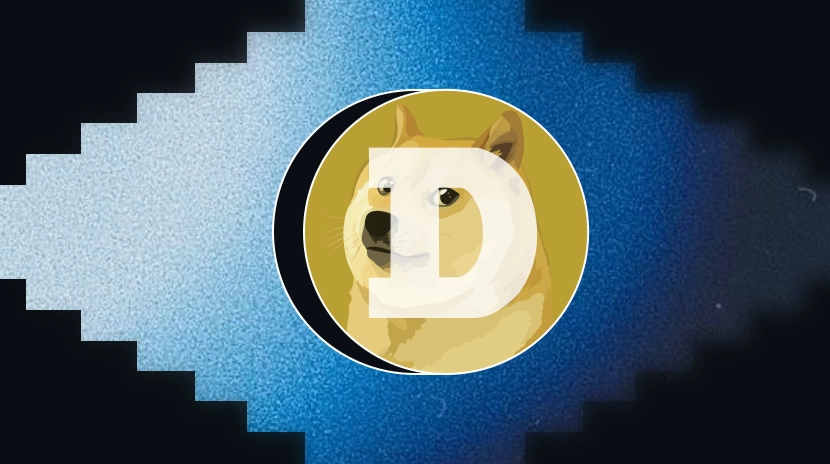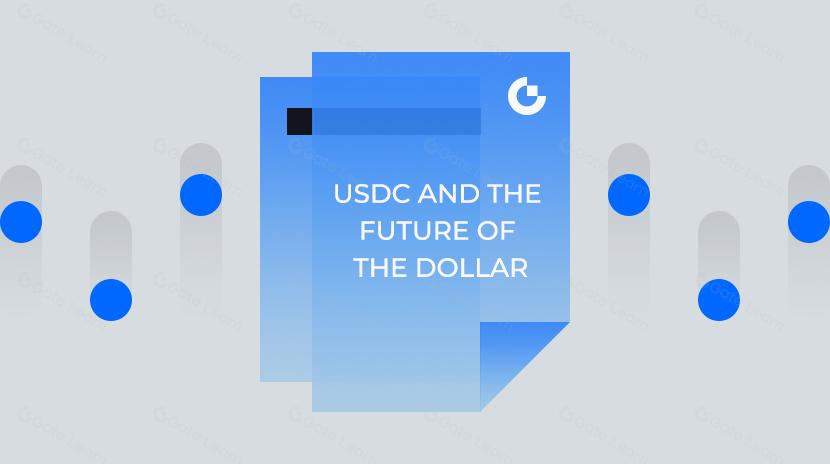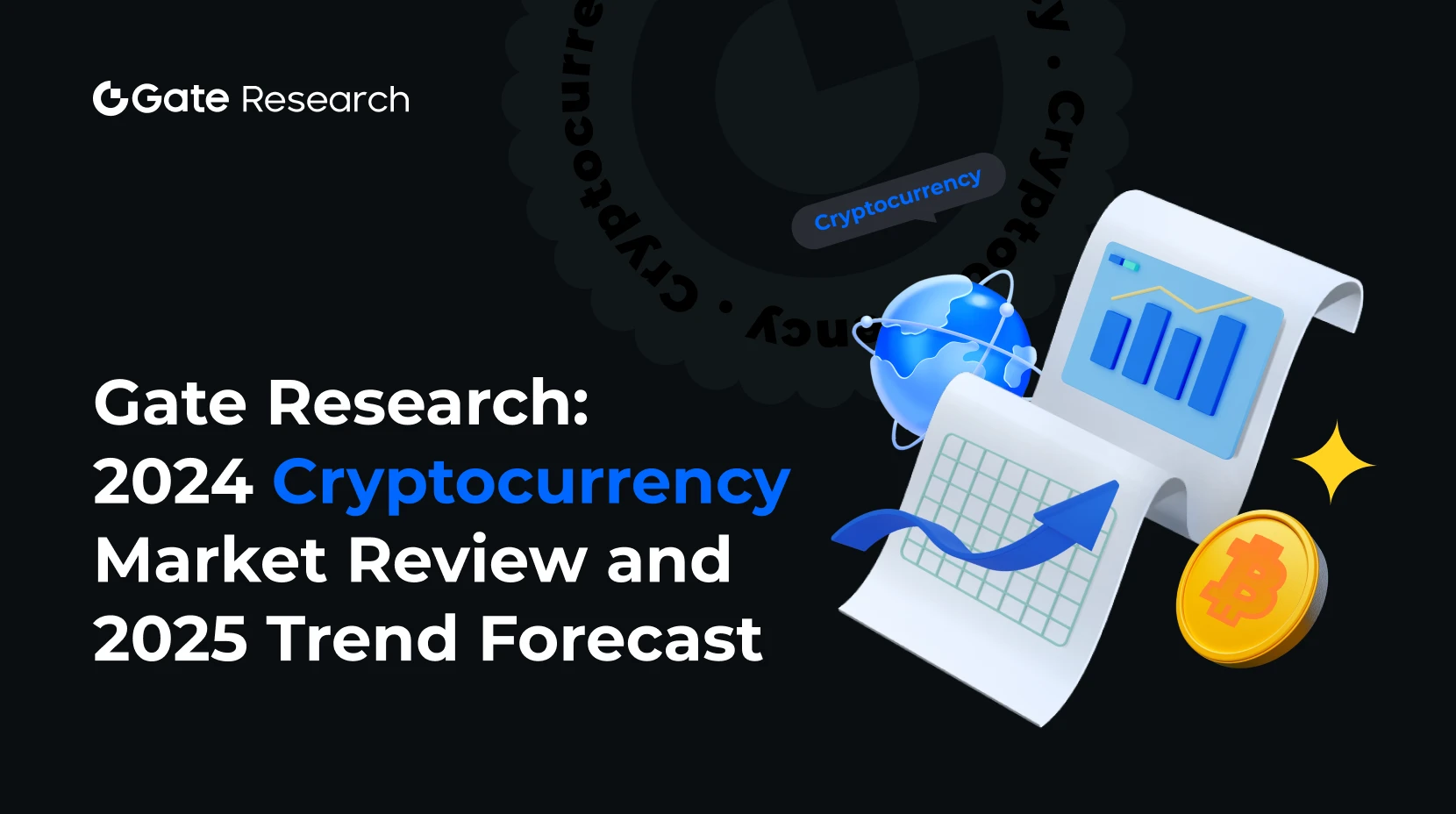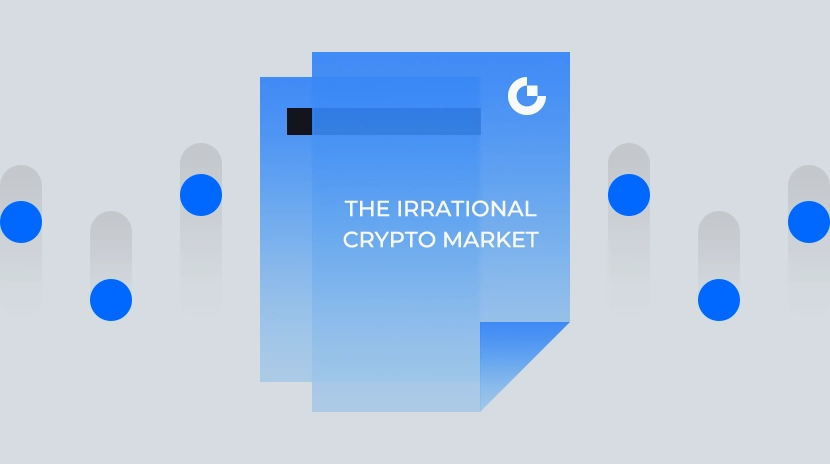Дослідження Gate: Події Web3 та розвиток технологій криптовалют на березень 2025 року
Передмова
Цей звіт підсумовує кілька важливих подій у сфері блокчейну та криптовалют протягом березня 2025 року, демонструючи як жвавість ринку, так і нові тенденції. Ключові події включають розширення Aave до основної мережі Sonic із розгортанням ринку кредитування V3, підтвердження фірмою з кібербезпеки Mandiant причетності північнокорейських хакерів до інциденту з безпекою Bybit, відхилення пропозиції Solana SIMD-0228, що впливає на плани коригування інфляції, Gate.io велике оновлення Web3 Wallet з агрегованою торгівлею мультичейн-хабом на основі штучного інтелекту, майбутня платформа запуску токенів Raydium LaunchLab, Представлення Pump.fun власної DEX PumpSwap, офіційний запуск Berachain своєї системи PoL, що керує децентралізованим управлінням за допомогою ліквідності, і маніпулятивна атака Hyperliquid, коли Hyper Foundation покриває втрати користувачів. Ці розробки демонструють інноваційний дух галузі, сигналізуючи про глибший технічний прогрес і залучення громади, що сприяє подальшому зростанню та зрілості в секторі.
Абстрактний
- Aave розширюється на головну мережу Sonic, розгортаючи свій ринок кредитування V3
- Safe{Wallet} підтверджує участь північнокорейської хакерської групи TraderTraitor у інциденті з безпекою Bybit
- Пропозиція SIMD-0228 від Solana не пройшла, що впливає на плани щодо коригування інфляції
- Gate.io Web3 гаманець отримує велике оновлення з AI-приведеним багатоланцюжковим хабом агрегованої торгівлі
- Raydium оголошує про майбутню платформу запуску токенів LaunchLab
- Pump.fun представляє свій власний DEX PumpSwap
- Berachain офіційно запускає систему PoL, що сприяє розвитку децентралізованого управління за допомогою ліквідності
- Hyperliquid страждає від атаки маніпуляції, при цьому Фонд Hyper відшкодовує збитки користувачів
Часова шкала

Фігура 1: Хронологія подій у криптовалютному світі
Основні події та оновлення
3/4 Aave розширюється на Sonic Mainnet, розгортаючи свій ринок кредитування V3
Протокол Aave завершив своє розширення, офіційно розгорнувши децентралізований ринок кредитування на високопродуктивному блокчейні Sonic. Це міжланцюжкове розгортання було схвалено за допомогою пропозиції управління Aave DAO (AIP-365) та провели Aave Chan Initiative, одна з основних сприяючих організацій Aave. Розширення було підтримано зобов'язаннями до ліквідності, включаючи 15 мільйонів доларів США фінансування від Sonic Foundation, до 50 мільйонів власних токенів Sonic (S) та додаткових 800 000 доларів США в стейблкоїнах та стимулах для міграції, наданих Aave.
Стратегія мульти-ланцюга Aave позиціонує його для привертання існуючої бази користувачів DeFi Sonic, використовуючи механізм розділу комісій Sonic для підвищення прибутку для постачальників ліквідності (LP), що призводить Sonic до досягнення позначки в $1 мільярд. Більше того, спільна програма стимулювання Aave та Sonic може спокусити великі протоколи, такі як Uniswap, на міграцію, що потенційно може змінити ландшафт екосистеми Layer 1. Однак Aave повинен відрізняти свої моделі процентних ставок, щоб конкурувати за існуючих користувачів, залишаючись бджіливим щодо ризиків безпеки, пов'язаних з міжланцюжковими містами активів та інфляційним тиском на стимулювання токенів SONIC. Якщо зріст екосистеми не відповідає очікуванням, розширення ліквідності в короткостроковій перспективі може призвести до ризиків розведення вартості в довгостроковій перспективі.
3/7 Safe{Wallet} розслідує інцидент безпеки Bybit, підтверджує зв'язок з північнокорейською хакерською групою TraderTraitor
Постачальник гаманця з багаторазовим підписом Safe{Wallet} розкрив, що він провів судово-експертне дослідження спільно з Mandiant, фірмою з кібербезпеки під Google Cloud, для аналізу інциденту з безпекою 21 лютого. Дослідження показало, що інцидент був високорівневим, санкціонованим державою нападом. Воно підтвердило, що ФБР вважає, що напад був здійснений групою TraderTraitor, яку Mandiant відстежує як UNC4899 — групу, відому раніше за організацію кількох крадіжок криптовалюти.
Атака включала в себе компрометацію ноутбука розробника Safe{Wallet} (Розробник1) та захоплення сеансових токенів AWS для обходу контролів багатофакторної аутентифікації (MFA). Цей розробник був одним із кількох осіб із високим рівнем привілеїв доступу. Використовуючи компрометовану робочу станцію, зловмисники намагалися отримати доступ до серверів Safe{Wallet}. Розслідування триває для подальшого аналізу конкретних тактик і шляхів діяльності зловмисників.
У відповідь, команда Safe{Wallet} впровадила широкомасштабні покращення безпеки для посилення інфраструктури, перевищуючи рівні захисту до інциденту. Тим часом смарт-контракти Safe не були пошкоджені внаслідок інциденту, що забезпечує безпеку коштів користувача. Додатково, BlockSec впровадив динамічний захист від безпеки для Safe{Wallet}, забезпечуючи моніторинг транзакцій у реальному часі, аналіз ризиків та автоматизовані відповіді на безпеку для подальшого підвищення безпеки гаманця та зменшення ризику подібних атак.
3/14 Пропозиція Solana SIMD-0228 не пройшла, план коригування інфляції зупинився
Пропозиція щодо вдосконалення спільноти Solana, SIMD-0228, спрямована на коригування темпів випуску токенів SOL для більш динамічного реагування на ринкові умови та можливого зменшення інфляції SOL на до 80%. Пропозицію було розроблено Тушаром Джайном та Вішалом Канкані з Multicoin Capital та підтримано Максом Резніком, головним економістом Anza. Основний механізм, запропонований у документі, динамічно коригує випуск токенів на основі обсягу стейкінгу SOL: зменшення випуску, коли обсяг стейкінгу перевищує 50%, щоб запобігти перестейкінгу, та збільшення випуску, коли обсяг падає нижче 50%, щоб збільшити виходи та підтримати стейкінг. Інфляційні темпи можуть бути знижені до 0%, з максимальним темпом, узгодженим із поточною кривою випуску Solana. На даний момент інфляційний темп SOL становить 3,94%.
Проте пропозиція в кінцевому підсумку не пройшла через недостатню підтримку. Загальна кількість голосів за підтримку та проти становила лише 61,39%, що не вистачило до необхідного порогу у 66,67%. Загалом 43,59% голосів були за, 27,40% проти, а 3,27% утрималися, тоді як 25,72% валідаторів не брали участь у голосуванні, що спричинило невдачу пропозиції.
Незважаючи на те, що цей пропозицію не було схвалено, вона підкреслює постійний фокус спільноти Solana на управлінні рівнями інфляції. Нові пропозиції, ймовірно, з'являться у майбутньому для оптимізації моделі токеноміки SOL та досягнення більш широкої згоди в межах децентралізованої системи управління.[4]
18 березня Gate.io Web3 Wallet запускає важливе оновлення, стає AI-підтримуваним багатоланцюжковим торговельним центром
Було оновлено офіційний Гаманець Gate.io Web3 в мультиланцюговий торговий хаб штучного інтелекту, який вводить перший у галузі крос-ланцюжковий дашборд активів, який дозволяє одним кліком управляти понад 100 активами громадських ланцюжків, включаючи Ethereum, Solana і BSC. Гаманець інтегрує вбудований агрегатор DEX, який безшовно з'єднується з топовими протоколами, такими як Uniswap і PancakeSwap. Алгоритми штучного інтелекту автоматично розподіляють торгові маршрути, знижуючи затримку на 40%. Він включає надшвидкісний торговий двигун, який забезпечує швидку реакцію на коливання ринку on-chain за 0,5 секунди.
Ексклюзивний AI Golden Dog Radar від Gate.io є видатною функцією, яка відстежує соціальні мережі та дані в ланцюжку 24/7, може похвалитися 75% історичною точністю у визначенні ранніх можливостей на ринку монет-мемів. У міру розширення багатоланцюгових екосистем і розвитку технологій торгівлі штучним інтелектом ринковий попит на децентралізовані торгові інструменти зростає, що сприяє тенденції до інтелектуальної торгівлі та крос-ланцюгової агрегації ліквідності. Торгові алгоритми штучного інтелекту можуть ефективно оптимізувати торгові маршрути, знизити витрати та підвищити ефективність виконання, тоді як висока волатильність ринку монет-мемів робить аналіз соціальних настроїв критично важливою стратегією. Це стратегічне оновлення від Gate.io покращує користувацький досвід і, як очікується, приверне більше трейдерів DeFi та короткострокових інвесторів, ще більше збільшуючи його частку на ринку. [5]
3/19 Raydium to Launch Token Issuance Platform LaunchLab
Raydium, децентралізована біржа (DEX) та автоматизований маркет-мейкер (AMM) на блокчейні Solana, оголосила про запуск LaunchLab. Ця платформа випуску токенів тісно відбиває дизайн популярного pump.fun. LaunchLab пропонує лінійні, експоненціальні та логарифмічні криві зв'язності для врахування попиту на ринку та гнучкості ціноутворення. Крім того, платформа дозволяє стороннім інтерфейсам користувачів встановлювати комісії, підвищуючи загальну гнучкість незалежно. LaunchLab також підтримуватиме декілька котирувальних токенів поза SOL та інтегруватиме функцію блокування постачальника ліквідності (LP) Raydium, забезпечуючи довгостроковий та стабільний дохід від комісій для емітентів. [6]
Рішення Raydium запустити LaunchLab розглядається як пряда відповідь на план pump.fun розвивати власний AMM, підкреслюючи інтенсивну конкуренцію в екосистемі Solana DeFi, особливо в просторі випуску мем-монет. Повідомляється, що спочатку Raydium відклав проект LaunchLab через небажання конкурувати безпосередньо з ключовим партнером. Однак після того, як стали відомі плани pump.fun, Raydium швидко відновив розробку LaunchLab. Pump.fun історично був важливим джерелом доходу для Raydium, і запуск LaunchLab розглядається як стратегічний крок для зменшення можливих втрат доходів та підтримки конкурентоспроможності на ринку випуску мем-монет. Тим не менш, pump.fun вже побудував велику базу користувачів і захопив значну частку ринку, що означає, що успіх LaunchLab буде залежати від його здатності перевершити pump.fun щодо користувацького досвіду, структур комісій та здатності привертати високоякісні проекти.
3/21 Pump.fun Запускає власний DEX PumpSwap
Pump.fun, популярна платформа монет-мемів на базі Solana, оголосила про запуск власної децентралізованої біржі (DEX) PumpSwap, спрямованої на надання користувачам більш плавного та ефективного досвіду торгівлі. Починаючи з цього моменту, всі токени, випущені через криву зв'язування платформи, автоматично перейдуть на PumpSwap, пропонуючи користувачам миттєву міграцію та нульову комісію за міграцію (раніше 6 SOL). Побудований на Solana, PumpSwap використовує модель Constant Product Automated Market Maker (CPAMM), подібну до Raydium V4 та Uniswap V2. Користувачі можуть безкоштовно створювати пули ліквідності або додавати ліквідність до існуючих пулів, забезпечуючи безперебійну торгівлю всіма токенами, що котируються на біржі. Наразі PumpSwap стягує комісію за транзакцію в розмірі 0,25%, з якої 0,20% виділяється постачальникам ліквідності та 0,05% протоколу. Очікується, що ця структура комісій буде розвиватися із запровадженням механізму розподілу доходів творців, призначеного для подальшого стимулювання якісних проектів. [7]
Запуск PumpSwap представляє собою значне оновлення екосистеми Pump.fun, що підвищує ефективність торгівлі, знижує бар'єри для входу і сприяє створенню справедливого, більш прозорого децентралізованого торгівельного середовища. Однак, незважаючи на те, що пройшов кілька аудитів безпеки, користувачам слід бути обережними щодо можливих ризиків у розумних контрактах та проводити ретельний попередній аналіз перед торгівлею.
25 березня Berachain офіційно запускає систему PoL для забезпечення децентралізованого управління через ліквідність
24 березня Berachain, блокчейн Layer 1, сумісний з EVM, офіційно запустив свою систему Proof-of-Liquidity (PoL), позначивши початок першої фази управління на ланцюжку. Система спрямована на сприяння більш широкому децентралізованому управлінню шляхом розподілу токенів управління (BGT) через ліквідні пули DeFi, одночасно підвищуючи ліквідність екосистеми. Початкові стимули спрямовані на конкретні ліквідні пули DEX, з планами розширення нагород на більше пулів у майбутньому.
Модель PoL від Berachain дозволяє користувачам вводити активи в ліквідні пулы, не блокуючи їх на обмін на токени управління BGT. Власники можуть делегувати BGT для впливу на ваги валідаторів, ефективно інтегруючи управління та ліквідність. Ця концепція покращує капіталовкладення, знижує бар'єри для участі і очікується, що приверне значну ліквідність DeFi в екосистему. Збільшуючи активність мережі та безпеку, модель PoL від Berachain вводить більш ринково-орієнтований парадигму для управління громадською ланкою блокчейну.
26 березня Hyperliquid страждає від атаки маніпуляції, Фонд Hyper відшкодує втрати користувачів
26 березня трейдер на Hyperliquid встановив коротку позицію на $6 мільйонів в JELLYJELLY, після чого відбулася масштабна покупка, що штучно підняла ціну, спровокувавши примусове ліквідації та передачу ризику позиції в Пул ліквідності Hyperliquid (HLP). Оскільки пул HLP ставки передбачувані втрати, Hyperliquid в кінцевому підсумку вирішив видалити контракт JELLYJELLY та зобов'язався компенсувати постраждалим користувачам (за винятком зловмисної адреси). Незважаючи на те, що платформа повідомила про прибуток у розмірі $700,000 USDC за 24 години до події, кошти користувачів побачили чистий вивід у розмірі $140 мільйонів USDC після події, що свідчить про значну втрату довіри.[9]
Згідно з офіційним оголошенням від Hyperliquid, зняття з лістингу токенів JELLY було схвалено валідаторами спільноти після того, як з'явилися обвинувачення у маніпулюванні проектом та ціновому маніпулюванні. Більшість членів спільноти підтримали обробку високоризикових активів через децентралізований процес прийняття рішень. Крім того, Hyperliquid заявив, що Hyper Foundation покриє збитки користувачів, понесені під час цього інциденту, і відповідний механізм компенсації вже було ініційовано. Ця дія спрямована на захист інтересів користувачів, підтверджуючи при цьому зобов'язання платформи до здоров'я екосистеми та прозорості ринку. Інцидент знову спровокував дискусії щодо механізмів перегляду для лістингу проектів на ранніх стадіях. Hyperliquid обіцяв подальше вдосконалення своїх процесів управління та кадрами контролю ризиків, щоб у майбутньому запобігти виникненню схожих проблем.[10]
Огляд
Березень 2025 року став свідком значних подій у сферах блокчейну та криптовалюти, що демонструє життєздатність ринку та тенденції промисловості. Ключові проекти, включаючи Gate.io Wallet, Berachain, Aave, Raydium та Pump.fun, зробили значний прогрес завдяки оновленням продуктивності, покращенням управління ланцюжком, розширенням протоколів та запуском нових платформ, що підкреслює інновації продукту та зростання спільноти, водночас вводячи свіжий потік в промисловість. Тим часом, атака маніпуляції на Hyperliquid, яка спричинила примусові ліквідації, послужила сигналом для проектів DeFi підсилити свої системи управління ризиками та управлінням.
References:
- X,https://x.com/aave/status/1896640279224168537
- X,https://x.com/safe/status/1897663514975649938
- BlockSec,https://www.blocksec.com/safe-wallet-monitor
- SIMD Vote,https://simd-votes.stakingfacilities.com
- X,https://x.com/GateWeb3Wallet/status/1901638418003591679
- Blockworks,https://blockworks.co/news/raydium-launching-pumpfun-version
- X,https://x.com/pumpdotfun/status/1902762320939319439
- X,https://x.com/berachain/status/1903227859675623591
- Передбачення,https://foresightnews.pro/article/detail/81076
- X,https://x.com/HyperliquidX/status/1904923137684496784
Дослідження Gate
Дослідження Gate - це всебічна платформа для дослідження блокчейну та криптовалюти, яка надає глибокий контент. Це включає технічний аналіз, інсайти на гарячі теми, огляди ринку, дослідження в галузі, прогнози тенденцій та аналіз макроекономічної політики.
Click тутвідвідати зараз
Відмова від відповідальності
Інвестування на ринку криптовалюти пов'язано з високим ризиком, і рекомендується користувачам проводити незалежне дослідження й повністю розуміти природу активів та продуктів, які вони придбають, перед тим як робити будь-які інвестиційні рішення. Gate.io не несе відповідальності за будь-які збитки або шкоду, заподіяні такими інвестиційними рішеннями.
Пов’язані статті

Усе, що вам потрібно знати про кількісну стратегію торгівлі

Посібник з Департаменту ефективності державного управління (DOGE)

Долар на Інтернет-цінність - Звіт 2025 року про ринкову економіку USDC

USDC та майбутнє долара

дослідження Gate: Огляд ринку криптовалют на 2024 рік та прогноз трендів на 2025 рік
